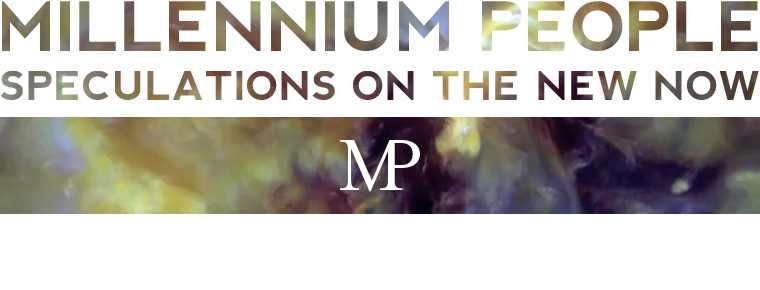
One of Kenzo Tange's early Metabolist (not yet Structuralist) projects, 1961.
From the point of view of its visionaries, Metabolism was a failure. Only a handful of buildings identified with the style were built, and (like the Archigram movement that followed it) the vast majority of projects remain to this day just dreams – the stuff of student reviews and utopian retrospectives.
Ironically, the key to the failure lies in the very basis of the movement: ephemerality (the Structuralists, who employed more or less the same ideals but without this quality were equally unsuccessful, but for other reasons). The Metabolists were trying to use architecture as a means to physically describe conditions of the metropolis that until then had remained intangible– though nonetheless extremely real– the ever-changing and ephemeral association of people, buildings, infrastructure, goods and information. The sum of these activities might be referred to as the ‘metropolitan flux’.
They recognised that the success of a city, and in broader terms of any species, was tied to how fast and with how much ease it could adapt to the needs of the moment, how capable it was of dealing with the metropolitan flux. They consequently proposed buildings that were comprised of adaptable modules bolted to permanent frames – this year the building is a tower block, but next year it might be a school or a hospital or a factory.
And there’s the rub: psychologically, people don’t like the idea that next year their home might be a factory. They like to feel that the structure they reside in is permanent. The Metabolists made the mistake of interpreting the city as being an essentially empty field filled with urban nomads. But the metropolitan flux is far more rooted than one might think: people still have a very strong sense of ‘mine’ and ‘thine’. The absurdity of this mentality is evidenced by the fact people are willing to buy McMansions with 25 year life-spans; it is after all not real permanence that the people seek, but the semblance of permanence.
Residential fluidity is thus impossible; public fluidity is not particularly welcomed – we like our civic spaces even more permanent than our domestic ones. Statues. Monuments. Important landmarks. All these form the basis of an urban fabric, and inform our relationship to it. The conceptual eternity of public space is an important factor the citizen's perception of belonging to a city.
 Somewhat behind the times, I recently discovered that Kurokawa’s Nakagin Capsule Tower is slated for demolition. It is one of the few built examples of module/modular construction, and the building is an icon of its era. So what prevents it from being an ‘object’?
Somewhat behind the times, I recently discovered that Kurokawa’s Nakagin Capsule Tower is slated for demolition. It is one of the few built examples of module/modular construction, and the building is an icon of its era. So what prevents it from being an ‘object’?Its form, while wilful, it not arbitrary and has little in common with the form-finding exercises used to produce contemporary architecture (I am not only referring to the digital curves of Zaha, but quite equally the gracious profiles of Murcutt).
The form of a Metabolist structure is dictated largely by its module. And the way of thinking about the module is a product of an agenda about the future of society. Moreover, specular/speculative architecture is almost always positive, in that it describes a response to an existing social situation. In this respect the architectural object reinforces the social status quo, and belongs to the order of social commentary.
Conversely, the social arguments of a Metabolist building are normative – they describe how things ought to be, and in this respect Metabolist architecture proposes itself as a tool for change, and thus belongs to the order of social progress.

Capsule Tower: a powerful symbol of Japan's post-war cultural revival.

Interesting post, Jack! It really got me thinking. I see what the metabolists were trying to get at -- a sort of flux that allows for the urban environment to evolve organically according to changing needs.
ReplyDeleteYet the impermanance also brings to mind a sense of "disposable-ness" that in this era of green seems a bit repugnant, and the cramped, cube shaped confines seem cage-like almost, inhumane.
A fascinating idea, but one that doesn't acknowlege our need for a sense permanance, as you note, and from what I hear -- roofs that don't leak.